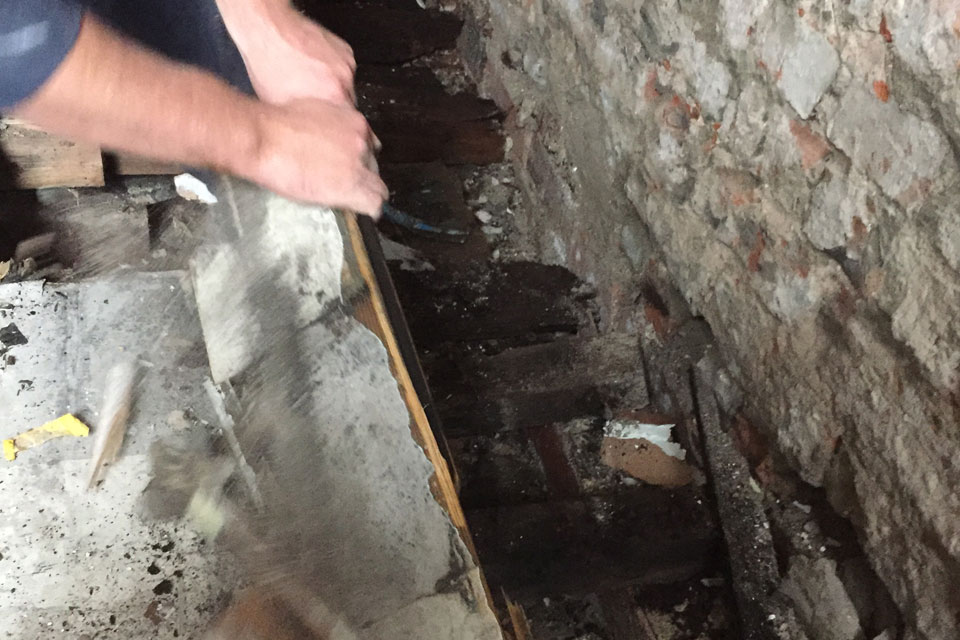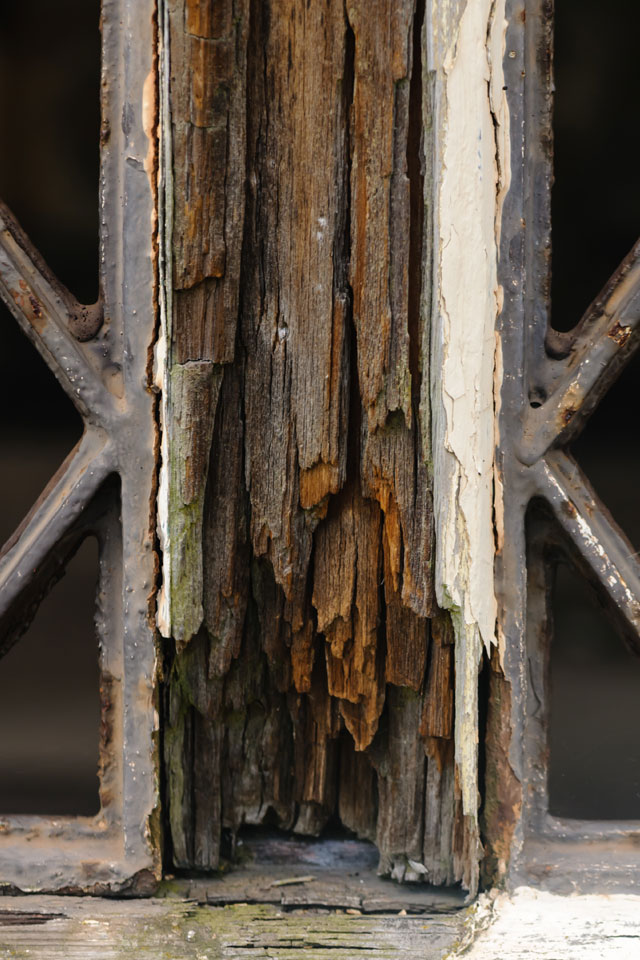Wet rot is a term used to describe timbers that are rotting due to high moisture levels. Wet rot can occur for a number of reasons, a leaky roof, a leaking shower, burst pipes, or even a washing machine that's not been connected up correctly. It can also be caused through failure of the damp proof course (DPC) in the brickwork where the moisture then reaches the ends of floor joists.
The tell tale signs of wet rot are:
To rememedy the problems the first stage is to stop the ingress of moisture into the building, this could be as simple as repairing a leaking pipe or more in depth where a course of treatment to walls and brickwork may be required. With a small outbreak, infected timber needs to be removed or cut away and a new piece of treated timber joined to what remains. In more severe cases where the timber has lost most of it's strength, it may be necessary to replace the whole timber with new treated timber. However, when wet rot occurs in structural timbers, eg; roof trusses or floor joists, building work may have to be undertaken.

Dry rot refers to outbreaks of wood decay by the fungus Serpula lacrymans. Dry rot can be difficult to detect early as it usually spreads out of sight, under floors, behind skirting boards or wall panels. It can cause major structural damage and needs to be addresses very quickly. Dry rot spreads agressively unlike wet rot.
Dry rot does need moisture to grow, which could be caused by a drip from a leaky pipe, rain water from the roof, or damaged gutters or down pipes.
Some of the first signs can be:
Treating the problem needs to addressed in stages, firstly, removing the source of moisture that is allowing the dry rot to grow. A minor outbreak can then be treated with fungicide, however, it is common for dry rot to spread before it is noticed , unfortunately requiring the removal and replacement of plaster, applying a fungicide and the replacement of timbers that are damaged.
